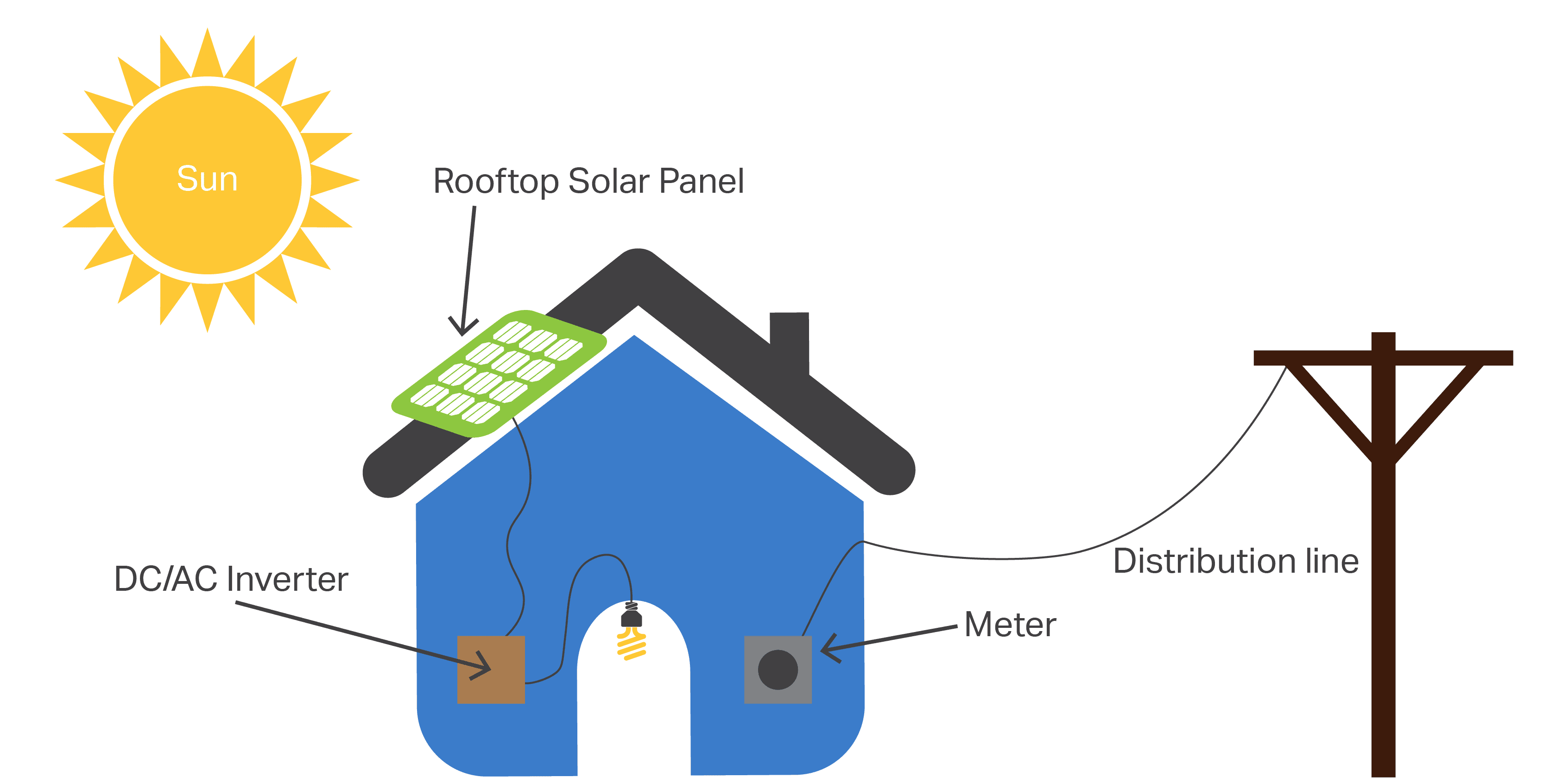AN ANALYSIS OF UTILITY NETWORK USE CHARGES FOR ROOFTOP SOLAR: WHAT’S FAIR?
by Haley Colson Lewis & Michael HansenAbstract
Solar energy will be a major part of Alabama’s energy supply and is crucial in cleaning up our air. Solar energy receives widespread public support, but policies at the state and utility levels have not reflected this enthusiasm. In 2015, the Solar Energy Industries Association ranked Alabama 49th in the nation for installed solar capacity.
There is good news, though. On September 1, 2015, the Alabama Public Service Commission approved Alabama Power’s petition for 500 MW of renewable energy capacity. In northern Alabama, the Tennessee Valley Authority is purchasing 80 MW of solar capacity from a solar farm in northern Alabama. Where industrial and commercial solar are growing in Alabama, there are still many barriers for residential customers who want to install their own solar systems — particularly in Alabama Power’s service area.
One of the most important factors for growing the solar energy industry is establishing policies and rate structures that fairly value the energy put onto the grid via rooftop solar systems. As is the case with other fuel sources for electricity generation, a number of factors should be considered and weighed to determine a fair value for solar energy. A net analysis of costs and benefits of solar will look at: avoided fuel and energy costs, avoided investment in power plants, a fixed cost for fuel source and the environmental and health benefits.
In addition, utility-imposed fees on solar customers — such as network use charges — act as regulatory barriers to growing the number of rooftop solar installations in Alabama. Although installing large-scale solar installations are an important step in growing Alabama’s solar energy industry, unjustified network use charges for rooftop solar are unfairly burdening residential power customers and stifling the growth of rooftop solar in Alabama.
What is Solar Energy?
Solar energy is the conversion of the sun’s radiation into sources of power, like electricity. A location’s solar radiation depends on numerous factors: geographic location, time of year, landscape, and weather. There are several ways solar energy is deployed: residential panels (PV), community solar installations, and utility-scale solar farms. Alabama receives sufficient solar radiation to produce ample solar energy, yet the state ranks near the bottom for both installed capacity and jobs.
Solar energy does not emit carbon and other harmful pollutants associated with traditional sources of power and the sun is an infinite resource for energy generation. It’s also attractive because it can provide autonomy. Residential solar systems can help customers reduce their electric bills and give them the power to control their energy consumption.

Net Metering
The Solar Energy Industries Association defines net metering as, “a billing mechanism that credits solar energy system owners for the electricity they add to the grid.” Forty-five states have net metering policies: Alabama is not one of those states. Net metering means that a rooftop solar owner who is connected to the utility grid is credited at the retail rate (nationally, as of 2016, 12.21¢/kwh for residential customers) for electricity delivered to the grid.
Net metering typically pays at the retail rate, but there’s no hard and fast rule. Without a net metering policy, the amounts paid to utility customers in Alabama is completely within the utility’s discretion. Alabama Power customers billed under Rate PAE are only paid about 3¢/kwh for electricity they contribute to the grid.
What is a Fixed charge for rooftop solar?
Generally, a fixed charge is a fixed expense that occurs on a regular basis in order to create more predictable budgets. These fees are often based on the utility having fixed costs. There are essentially two types of fixed costs: customer-specific and systemwide.
CUSTOMER-SPECIFIC. This includes factors such as metering, billing and maintaining the transmission line from the distribution system to the house.
SYSTEMWIDE. This means running the electricity distribution system as a whole, so, for example, the cost of maintaining distribution networks in residential neighborhoods.
Some utilities across the nation have increased fixed charges that customers with rooftop solar pay. However, fixed charges for solar single out specific members of a utility’s customer class, which is against recognized best ratemaking principles.
The 2017 Lawrence Berkeley National Lab report, “Putting the Potential Rate Impacts of Distributed Solar into Context” (Barbose), describes minimal cost-shifting in states with low penetration rates:
“For the vast majority of states and utilities, the effects of distributed solar on retail electricity prices will likely remain negligible for the foreseeable future. At current penetration levels (0.4% of total U.S. retail electricity sales), distributed solar likely entails no more than a 0.03 cent/kWh long-run increase in U.S. average retail electricity prices, and far smaller than that for most utilities.”
Fixed charges in Alabama
Fixed charges can, and oftentimes do, inhibit the growth of residential solar. A customer with rooftop solar and battery storage can see a delay by several years in the economics of going solar due to fixed charges. Such fixed charges affect not only the economics of going solar, but also customer choice and satisfaction.
Alabama Power currently imposes a $5.41 per kilowatt monthly “capacity reserve charge” on solar and other types of distributed generation. This charge affects not only rooftop solar and residential customers, but also small businesses and schools who rely in part on solar installations to offset the energy they consume and buy from Alabama Power.
This particular fixed charge for rooftop solar not only unfairly burdens Alabama Power customers who install rooftop solar, but also reduces up to 50 percent of the savings customers could enjoy by going solar. Similar, prohibitive fixed charges for rooftop solar have been proposed, approved or rejected across the U.S. To add insult to injury, the Alabama Public Service Commission’s (PSC) approved the Alabama Power fixed charge in January 2013 without any public input or justification.
Fixed charges in Action
In the instances on below, such proceedings at regulatory bodies involved not only public scrutiny, but also in depth and technical analyses to support or reject the approval of a fixed charge on customers who have installed solar. Furthermore, these states either have more solar capacity than Alabama or net metering policies — or both.
| STATE | UTILITY | FIXED CHARGE | RESULT |
|---|---|---|---|
| Alabama | Alabama Power Company |
• $5.41/kW per month • $25 per month |
Approved |
| Arizona | Arizona Public Service Salt River Project |
• $5 per month • $21 per month • $50 per month |
Approved Proposed Approved |
| Colorado | Intermountain Rural Electric Association | • $9.30 per month | Proposed |
| Georgia | Georgia Power | • $5 per month | Withdrawn |
| Iowa | Pella Cooperative Electric |
• $27.50 per month • $85 per month |
Approved Proposed |
| Minnesota | Peoples Electric Cooperative | • $5 per month | Rejected |
| New Mexico | Public Service Company of New Mexico | • $9.75 per month | Rejected |
| South Dakota | Black Hills Power | • $5 per month | Withdrawn |
| Tennessee | Kingsport Power Co. | Demand charge solely for net-metered customers based on the customer’s “single highest 15 minute integrated peak” demand during each billing period | Withdrawn |
| Utah | Rocky Mountain Power | • $4.65 per month | Rejected |
| Wisconsin | We Energies | • $20 per month | Approved |
| Wisconsin | Rock Energy Cooperative | • $27 per month | Approved |
Alabama Power’s PSC-approved $5.41/kW capacity reserve charge unfairly burdens customers with rooftop solar and unjustifiably affects their energy choices. Such fixed charges are based on theoretical cost-shifting approaches that are unsupported by data. In other words, the punitive fees Alabama Power charges its customers aim to solve a problem that doesn’t exist and ultimately do more harm than good by hampering Alabama’s fledgling solar energy industry.
Factors to Consider in a Fair Value of Solar Analysis
1. Avoided Energy
2. Avoided transmission and distribution
3. Fuel Price
4. Environmental Benefits
5. Economic Development
6. Customer Choice
Conclusion
With such an abundant solar resource, Alabama should not be ranked in the bottom 10 nationally for solar capacity. Although Alabama Power and TVA have made important strides in the past year to growing Alabama’s solar energy industry, regulatory and policy barriers still exist that impede the growth of rooftop solar. The PSC should not have approved the $5.41/kW charge that unfairly burdens Alabama Power customers who want to install rooftop solar. Utilities and regulators in Alabama should be promoting and approving policies that allow Alabama to benefit from the job growth, customer autonomy and environmental benefits of solar energy. A major step in realizing these benefits would be the PSC revisiting the $5.41/kW charge and considering public input and justification for reducing or eliminating the charge.
© Copyright 2020 GASP | Clean Air. Healthy Communities.
New Merkel helps good organizations do great things.
